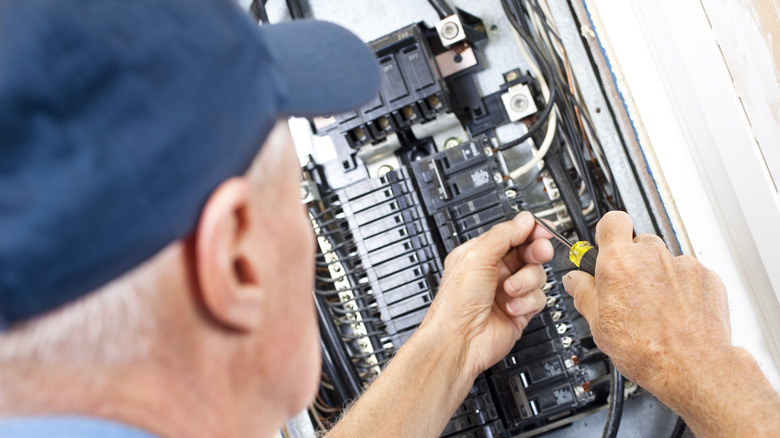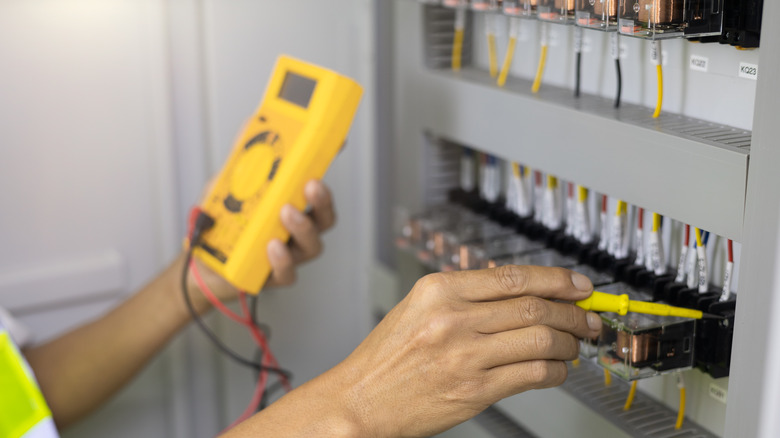HGTV's Renovation 911 Stars Teach You How To Protect Your Home From A Freak Lightning Strike
We usually don't think of lightning as a serious threat to our homes in the way that earthquakes, hurricanes, and tornadoes are — yet it's more damaging than you may think. The Insurance Information Institute shares that over 71,550 claims for lightning strike damage to homes occurred in 2020, costing over $2.1 billion. Unless you put your home in a bubble, though, how can you safeguard from such a seemingly random event like lightning?
In an episode of "Renovation 911", Lindsey Uselding and Kirsten Meehan, who are renovation experts in the case of emergencies like fires, provide a few steps property owners can take now that could minimize the damage brought on by such a strike, including the use of a surge protector. There's no way to eliminate the risk since you cannot control where the next storm rolls in. But taking a few preventative measures could mean the difference between minimal damage and a whole rebuild.
Your home needs a surge protector
A surge protector helps to create a barrier between an unwanted surge of power, like that coming from a lightning strike, and all your home's appliances. You may be using one now to help minimize risk to your computer system. What about all the other appliances and electronics in your home, though? In the "Renovation 911" episode, the team is helping Sandra and Trevor, who suffer significant damage to their home after a lightning strike. Uselding shares, "When lightning struck Trevor and Sandra's house, it sent a surge that fried their electronics and appliances to the tune of almost $5,000" (via Realtor).
To prevent the same thing from happening in the future, the duo had an electrician install a surge protector that would help to manage most of the power coming through the system from a lightning strike, minimizing the damage significantly. These devices are not inexpensive, with quality models costing around $125. However, they could save your home from extensive damage and electrical loss. You may be able to install them yourself. Once in place, there's nothing more to do with them. They'll work when needed.
What else you can do to protect your home from lightning
If you live in an area where thunderstorms are common, it's worth it to take a few extra steps to minimize risks. One step involves the use of a lightning protection system. This system creates a way for the energy surge from a lightning strike to avoid impacting your home. It helps that powerful energy burst to move towards the ground along a different path than through your home. It works with a lightning rod that directs lightning energy away from your home. This, coupled with a whole-home surge protector, can minimize most of the damage your home faces.
You can also work with a licensed electrician to create a customized surge protection plan for your home, especially if you live in a high-risk area. This plan will incorporate surge protection devices specifically designed for your home's needs. If you know a storm is coming and haven't had your home updated yet, unplug some of your most valuable electronics from the wall, eliminating the risk of a power surge impacting them. Most importantly, take care of yourself and your family by getting indoors. Monitor your home for any damage if you suspect a lightning strike occurred, including checking for fallen trees or other debris on your roof.


